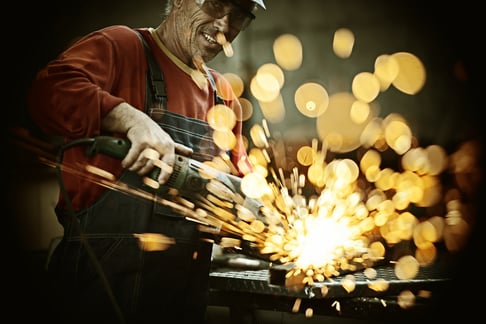
When you work with metals, you've got plenty to keep on top of. Metals futures, commodity trading and market changes that impact your business' profitability can quickly take up a lot of your daily focus. But that doesn't mean that you should forget about the value of your equipment! Many business owners don't understand how a metal fabricating asset valuation works, which causes them to wait until specific circumstances to have one performed. However, by understanding how the process works, you can get a better grip on how to use this valuable tool to help manage your business' metal fabrication equipment assets.
How Does Metal Fabricating Asset Valuation Work?
There are a number of areas that are considered during a metal fabrication asset appraisal:
- What condition is the equipment in? Generally speaking, the equipment's condition in terms of hours, whether it's being used heavily or lightly, if it appears to be in good condition and similar details will help the appraiser determine how high demand will be for a piece of equipment.
- Is the equipment in demand in the market? As an example, welding robots that can be set up for machine learning are a hot commodity with the popularity of IoT and AI, which can dramatically increase the estimated value of the equipment. Machinery that does not have this capability may see lower values.
- Does the equipment have any special features, options or kits that have been added that impact its value? When your equipment does more, it often increases the estimated value, provided that it is able to truly deliver value. A feature that was tossed on at the last minute may not perform well, actually lowering value.
- How well has the equipment been maintained? If you can provide logs of maintenance and repairs, this documentation serves as proof that the equipment has been well cared for over the years and will continue to function long after poorly-maintained equipment will begin to fail. The appraiser also looks for signs of abuse, such as dents, unrepaired issues and similar problems that shorten lifespan.
- Are there changes in the market that are increasing or decreasing demand for that type of equipment? As with the AI-capable welding robots mentioned above, changes in the market can rapidly change the demand for your equipment. Stay on top of changes that are coming down the road by buying new machinery at the right time.
- What is the equipment's expected remaining useful lifespan? Knowing how long the equipment will last provides a data point for the appraiser to estimate its value. Equipment that is on the verge of failing has a lower estimated value than equipment that is expected to last a long time.
Metal fabricating asset valuation can be a powerful tool, making it easier to negotiate a fair market price when it's time to buy or sell used equipment, deal with insurance adjusters who don't have a solid grasp of your equipment's value, fight an incorrect property tax assessment or leverage the estimated value of that equipment to help secure financing to grow your business and take it to the next level. However, you can only realize these benefits if your equipment appraisal has been performed by an accredited equipment appraiser, who has been educated in the right way to estimate your equipment's value. An accredited appraiser will never have any problem providing you with verification of their training and background.

